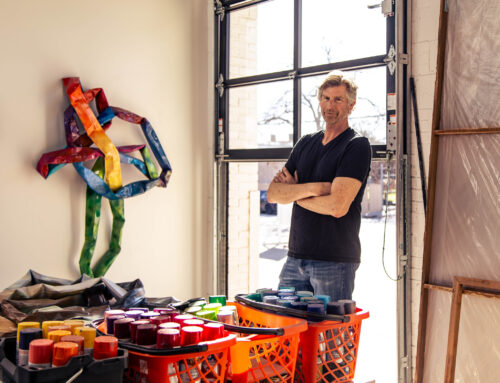Since its dedication May 28, 1876, the reform Judaism Temple Emanu-El has not only been
ground zero for reform Jewish culture in North Texas, but also the place where many of the institutions that affect us were first conceived.
“Herbert Marcus, Arthur Kramer and countless others — the congregation was always involved in Dallas civic affairs,” says Gerry Cristol, Temple Emanu-El archivist and author of the recently published book A Light in the Prairie.
Dallas’ early Jewish citizenry helped transform Dallas from a frontier town into a fledgling city. Merchants, bankers, rabbis and developers are among the Jewish professionals
whose fingerprints could be found on shovels that broke ground on many of our enduring cultural, educational, and charitable organizations, including: the Dallas Public School System, the Texas State Fair & Exposition, the Dallas Public Library, the Dallas Community Chest (later known as The United Way), and the Dallas Symphony.
In 1953, Temple Emanu-El settled in North Dallas, on an 18-acre Preston Hollow parcel on the northeast corner of Hillcrest and Northwest Highway. The one-time collaboration between local architects Max Sandfield and Howard Meyer, in conjunction with consulting architect William W. Wurster and sanctuary designer Gyorgy Kepes, was unveiled, and Temple Emanu-El had a peak experience. Even Life magazine was in awe of
the new structure, and the world’s foremost
photojournalistic magazine featured a full-page color spread of the temple’s dedication heralding it as “the most remarkable synagogue in the U.S.”
Numerous architectural awards followed followed for the dignified design that prompted famed Texas architect O’Neil Ford to wonder “How in this day … of ostentatious and exhibitionist architecture and self-conscious decoration, could a group of people and the artists they engaged hold these influences in check?”
The work of many splendid artists was included in the finished product: Kepes’ stained glass windows, which start out in muted colors and, as they move closer to the Ark, become bolder (“Amazing,” Cristol says. “A wonderful place to sit in.”); Octavio Medellin and Charles Williams’ mosaic menorah whose
gold and colored shards glimmer all the way up the wall behind the lectern; world-renowned tapestry weaver Anni Albers’ tapestry covering the Ark, home of the Torah; and sculptural renditions of the menorah and the parting of the Red Sea created, respectively, by sculptors Max Sample and Octavio Medellin.
“The leadership of Temple Emanu-El had succeeded in building a house of worship of great beauty, dignity and strength,” Cristol writes, “which expressed silently, but more eloquently than words could convey, the pride they felt in their faith and their place in the community.”
In Judaism, “the eternal light is a symbol of God. In other words, it is the light that never goes out. It is always replenished,” Cristol says.
In Texas, innovation has always been a sign of the spirit that this land engenders, and for what it has and will continue to accomplish, Temple Emanu-El’s light is a bright beacon of true lone star character.






